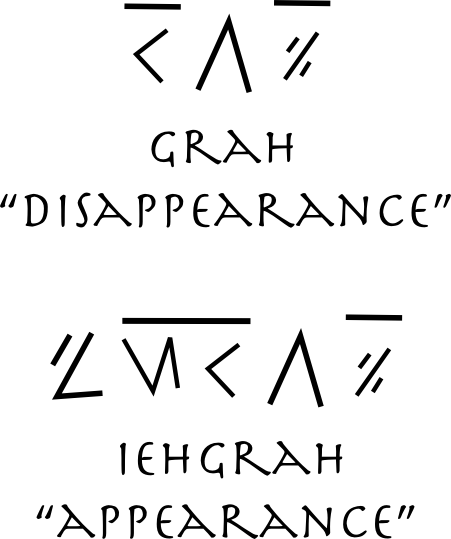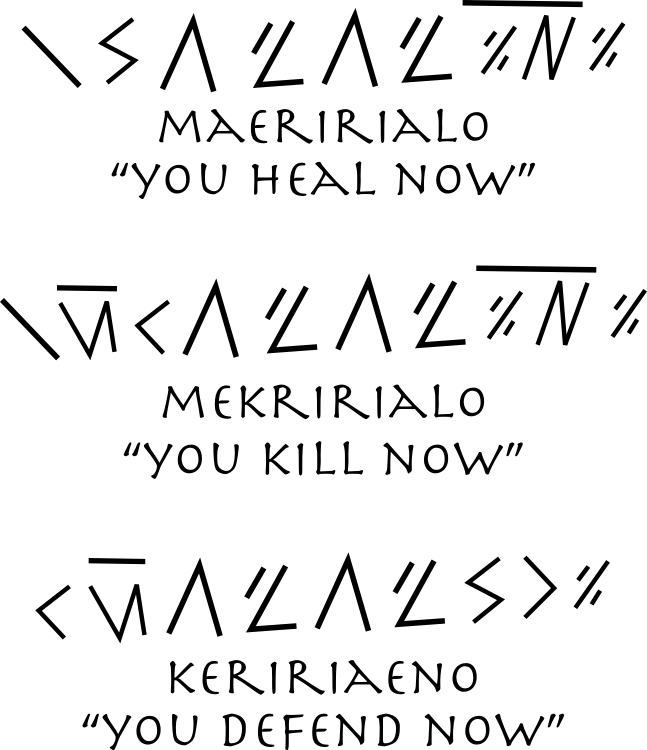All magic items should have a story. Rename these items after important historical personages from your own world. Some items will be shrouded in such mystery that the players have no idea where they were made or for whom. But the Guide should have a good idea either of the item’s origin or who held it most recently.
Beathachord
This Celtic heirloom of the Carlisles holds a plant spirit at 6th level, permanently manifesting Helpful Hemp. The belt is activated by speaking the word “beathachord”. The spirit grants the bearer a bonus of 12 lassoing stationary objects. Lasso attempts in combat are at +6 to attack, and evasion against it is at a penalty of 6. It can untie itself on command, and its knots will not unravel unless commanded to do so.
The rope is 24 yards long. Its length will increase to 38 yards as needed, and its bulk is 4. It can hold 120% more than normal when activated, and it has a bonus of 6 on item reaction rolls.
The Belt of Walking
 This magic bronze buckle, on a belt of strange leather, is octagonal and engraved with runes on the front and back. The front translates as disappearance, and the back as appearance. In the underground tongue, these are “grah” and “iehgrah” respectively. Grah activates the belt; iehrah deactivates it.
This magic bronze buckle, on a belt of strange leather, is octagonal and engraved with runes on the front and back. The front translates as disappearance, and the back as appearance. In the underground tongue, these are “grah” and “iehgrah” respectively. Grah activates the belt; iehrah deactivates it.
The belt is imbued with the spell angular path at tenth level. It may be used three times before exhausting its power; it renews itself every new moon.
Other than that it detects as magical, the buckle looks like it’s worth two to ten silver coins, depending on who buys it.
The Bull Sword
Known also as the Sword of Taurus, the sword was made by the wizard Measure and the Night Prophet Alazar for use by the evil warrior Taurus the Empty, and has since been used by many warriors before disappearing over a hundred years ago.
The sword grants a bonus of 1 to attack during the day, and a bonus of 3 to attack at night. It also grants a bonus of 2 to the point cost for increased number of actions.
The sword can confer strength (as the spell, cast at sixth level) once per day.
The sword is intelligent: it has intelligence 13, charisma 13, wisdom 15, and is Ordered Evil. It has expertise in War Art at +2, with the skills Tactics and War Lore. It may communicate with its bearer through empathy. It is seventh level for purposes of reactions, and, if it takes over the bearer, may act as a seventh level warrior.
Prophets or priests of Christianity who attempt to use the sword must make a willpower roll or go stark raving mad for d4 rounds. At the end of that period, another fortitude roll is required to maintain consciousness. If the character falls unconscious they may be woken normally.
Cape of Shadows
This magic Cape is rumored to originate from the Elves of the Long Lakes, although it has mostly seen service in the hands of human thieves. It attracts shadows and natural darkness, causing the wearer to blend in with natural shadow.
The Cape of Shadows grants thieves a bonus of 4 on Hide rolls and a bonus of 2 on any attempt to surprise. It grants any wearer a bonus of 2 to defense against missile and melee combat. The Cape does nothing to protect from sounds or smells giving the wearer’s location away.
Clauricane’s Harp
On successfully playing this magic harp, the character and what the character is carrying become invisible. The character may move only at up to normal walking speed while playing the harp. Others will hear the music, but as if from a far distance. A successful perception roll must be made to determine the general direction of the harp (and thus the character).
The harp also masks the character’s smell, and muffles the noises the character makes (so that it appears to be coming from far away, as the music).
Using the harp requires skill in harp playing, and an easy charisma roll is required to use the harp.
Elven Shoes
The fabled Elven shoes are not for Humans or Elves, but for horses: three sets are known to exist, though one set was lost in the great war against the goblins (as was the great horse Fiendril and its rider, the Elven warrior Caremesendil). The horseshoes make their steed’s movement completely silent. In Elvish, these magic shoes are known as irenafien, “silent as the wind”.
Girard’s Ring of Invisibility
A simple silver ring, it bears no inscription or patterns except the letters “Gir. Nelson” on the inside. When worn, it becomes invisible. When the wearer becomes unconscious, or sleeps, the wearer also becomes invisible. This magic ring was created by Girard Nelson, a Stigmatic Priest, and sorceror of the Order of Stigmas di Cristo on the western slopes of the High Divide.
The Golden Eyes of Tialnambe
Avieglien the half-Elf crafted three golden eyes after the fall of the elder race of men, to protect those the Elves care most deeply about. Those who wear an eye, as ring or necklace, gain a bonus of four to all defensive reaction rolls, as well as to defense. Whenever desired, the golden eye can light the area ten yards before the bearer, in a sixty-degree arc, with a bright light; or it may shine a beacon one foot wide for sixty yards. Once per day the bearer can call forth a shield through which no normal weapon may pass, neither sword nor missile. Magic weapons might break through, but are at a further penalty of four to attack. The golden shield lasts for ten minutes.
Only humans or half-humans, with a good moral code, may use the golden eyes. Any of evil moral code who wear a golden eye will feel unease and restless, and will have a penalty of four to attack any creatures with a good moral code.
The golden eyes were made with golden necklaces, but the necklaces, while long-lasting, were not magical and may not have survived the ages. One eye is known to have been placed on a ring.
Jug of Protection
 This old and battered jug doesn’t look to be worth anything. But beneath the grime and grit of centuries are three words in strange runes. The runes translate as “heal now”, “kill now”, and “defend now”; they are pronounced maeririalo, mekririalo, and keririaeno, respectively.
This old and battered jug doesn’t look to be worth anything. But beneath the grime and grit of centuries are three words in strange runes. The runes translate as “heal now”, “kill now”, and “defend now”; they are pronounced maeririalo, mekririalo, and keririaeno, respectively.
Fill the jug with any liquid and speak the appropriate word, and the liquid will become a one-dose potion of either restore vitality, deplete vitality, or divine prowess, according to the word spoken by the bearer. Each are at fifth level, so that restore vitality heals d8 survival or injuries (minimum 5), and deplete vitality causes a loss of the same amount. Divine prowess grants d6+5 temporary survival points and a bonus of one to attack, defense, and any reaction rolls for up to ten rounds.
The jug is imbued with one fifth-level spirit of healing and one fifth-level spirit of war; the spirit of healing (restore or deplete vitality) may be used once per day, and the spirit of war also may be used once per day. The jug is also protected by durability at the fifth level, so that it has +5 to item reaction rolls.
Oil of Clarity
A vial of oil, with enough left for three uses, provides the power of the Clear Portal spell at tenth level. This means it can affect a portal up to ten feet in diameter, and it will clear the portal for forty seconds.
Potion of Healing
Perhaps the most common of divine boons, this potion contains a spirit of healing of level 2d4. Normally set to manifest restore vitality, it will heal 1d8 points damage when quaffed, for a minimum of the spirit level. Administered by a prophet, however, it can perform any healing manifestation.
The Protective Ring of Boaz
Legends tell of the flight of Boaz into the mountains with the entire Southern armies on his trail following his infiltration of Prince Stomroy’s treasure chambers. Rumors place his magic ring in the custody of two or three lesser heroes in the centuries since his disappearance.
The ring grants the wearer a bonus of 2 to defense and to all reaction rolls.
The Sword of Ellesan
Forged by Dwarves and wielded by Elven kings, the sword was broken in the last battle of the Deadless Lord. The Elf call it “Lirel len-Elessan” (which means, simply, “the sword of Ellesan”). It was last wielded by Elessan Torilarvan, whose name means “Sword of the Silver Forest”. Fine inscriptions cover the blade. On one side of the blade is written the story of its forging in Dwarf runes. On the other, the story of its creation in Elven script.
The sword has two parts: the hilt and lower part of the blade, and the middle and tip of the blade. Each part grants the bearer special powers. The blade confers protection from undead. No undead may touch the bearer unless the bearer provokes attack. Even then, the bearer gains a bonus of 2 to all reaction rolls against undead attacks.
The hilt has disappeared and is rumored to be in the hands of trolls or giant-kin. See The Lost Castle of the Astronomers for one potential resting place.
